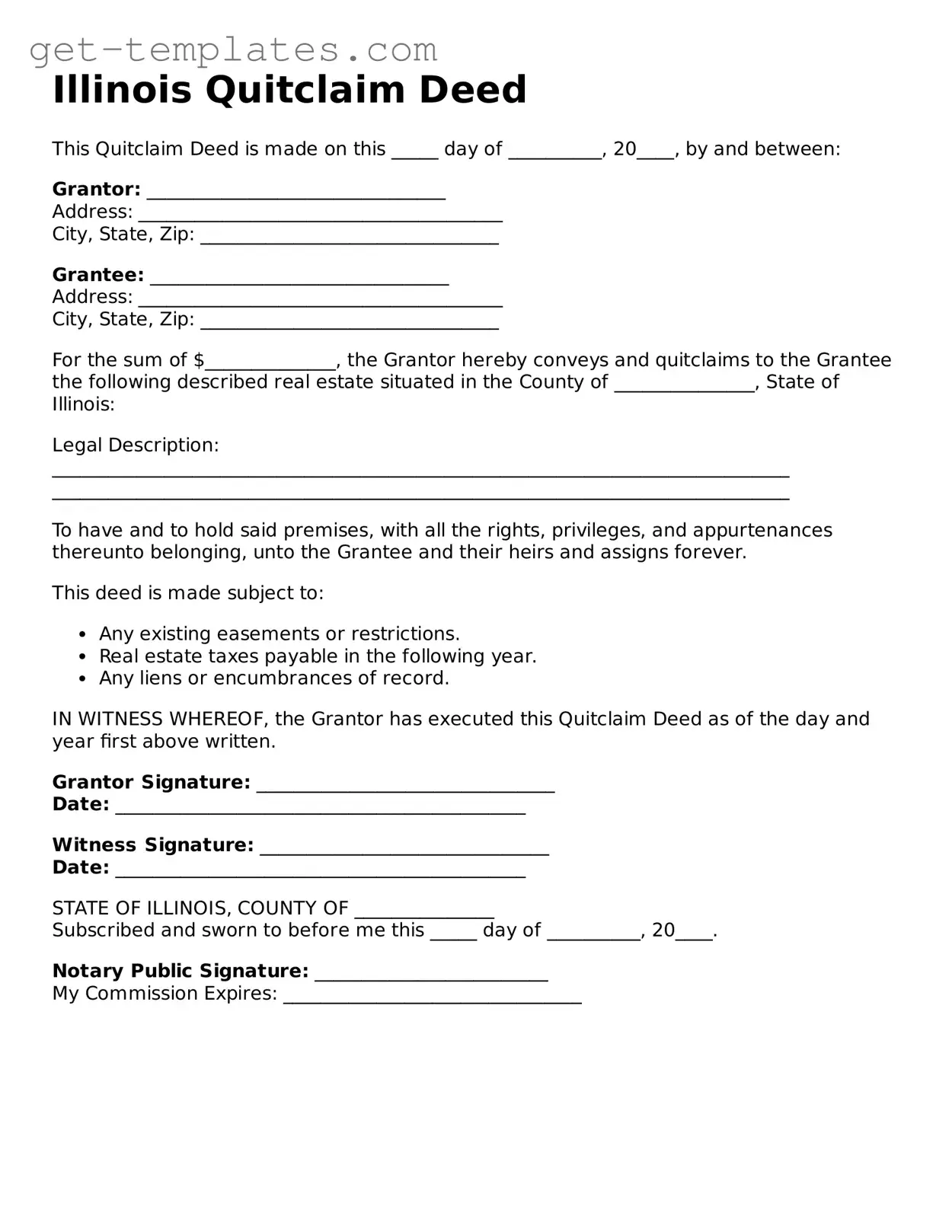Illinois Quitclaim Deed
This Quitclaim Deed is made on this _____ day of __________, 20____, by and between:
Grantor: ________________________________
Address: _______________________________________
City, State, Zip: ________________________________
Grantee: ________________________________
Address: _______________________________________
City, State, Zip: ________________________________
For the sum of $______________, the Grantor hereby conveys and quitclaims to the Grantee the following described real estate situated in the County of _______________, State of Illinois:
Legal Description:
_______________________________________________________________________________
_______________________________________________________________________________
To have and to hold said premises, with all the rights, privileges, and appurtenances thereunto belonging, unto the Grantee and their heirs and assigns forever.
This deed is made subject to:
- Any existing easements or restrictions.
- Real estate taxes payable in the following year.
- Any liens or encumbrances of record.
IN WITNESS WHEREOF, the Grantor has executed this Quitclaim Deed as of the day and year first above written.
Grantor Signature: ________________________________
Date: ____________________________________________
Witness Signature: _______________________________
Date: ____________________________________________
STATE OF ILLINOIS, COUNTY OF _______________
Subscribed and sworn to before me this _____ day of __________, 20____.
Notary Public Signature: _________________________
My Commission Expires: ________________________________
